Human Trafficking Training Credentials: Certificate Descriptions
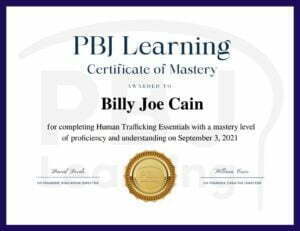 Human Trafficking Training Credentials (Certificates and Continuing Education Units) for our courses are 100% guaranteed to be accepted by any organization. Here are a few examples of universities and professional development groups using our materials:
Human Trafficking Training Credentials (Certificates and Continuing Education Units) for our courses are 100% guaranteed to be accepted by any organization. Here are a few examples of universities and professional development groups using our materials:
Project Management Institute
Human Trafficking Essentials has been accepted for Project Management Professional (PMP) Professional Development Units (PDUs are equivalent to Continuing Education Credits, or CEUs). PMP is an internationally recognized professional designation offered by the Project Management Institute.
CIO magazine ranked the PMP as the top project management certification in North America because it demonstrates you have the specific skills employers seek, dedication to excellence and the capacity to perform at the highest levels. Read more here.
International Game Developers Association
International Game Developers Association members receive a significant discount on Human Trafficking Essentials as part of their benefits package. Read more here.
Governors State University and College of DuPage
Criminal Justice Students at Governors State University and College of DuPage are learning the fundamentals of human trafficking through Human Trafficking Essentials.
Human Trafficking Essentials Online Course Learning Objectives
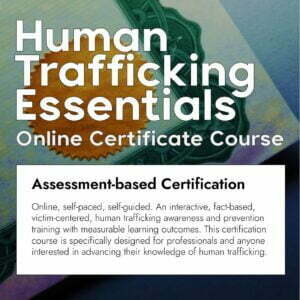
Specifically designed for professionals and anyone interested in advancing their knowledge of human trafficking.
Contains all the basics everyone in the field should know, and provides pre-course and post-course assessments to show improvement from the course.
- In-depth information on human trafficking definitions, prevalence, risk factors, vulnerabilities, red flags, and responses
- It is victim-centric, measurable, and based upon over a decade of research
- The materials are delivered in 30 minutes of video and dozens of lessons and interactive activities
- Practical responses to trafficking, statistics, and survivor stories
- Requires passing an assessment to receive Human Trafficking Essentials Certification
Detailed information:
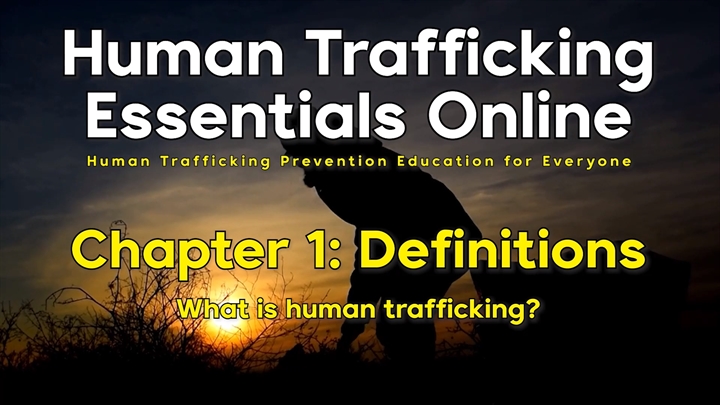 Chapter 1: Definition Overview
Chapter 1: Definition Overview
Contents
- National and international definitions of what is human trafficking.
- USA: Trafficking Victims Protection Act of 2000 (TVPA)
- International: Palermo Protocol
- Explanation of what is not human trafficking.
- Examples of crimes that intersect with human trafficking.
- A brief activity to test what you have learned.
Learning Objectives
- Human trafficking definitions.
- How to differentiate human trafficking from other crimes.
- What other crimes intersect with human trafficking and are commonly misperceived as human trafficking.
Questions you will be able to answer
- Human trafficking consists of what three elements?
- Does a national definition of human trafficking exist in the United States?
- The means used to traffic people includes what?
- What crimes intersect with human trafficking?
- At what age is it necessary to establish the means of trafficking a victim in order to prosecute the trafficker?
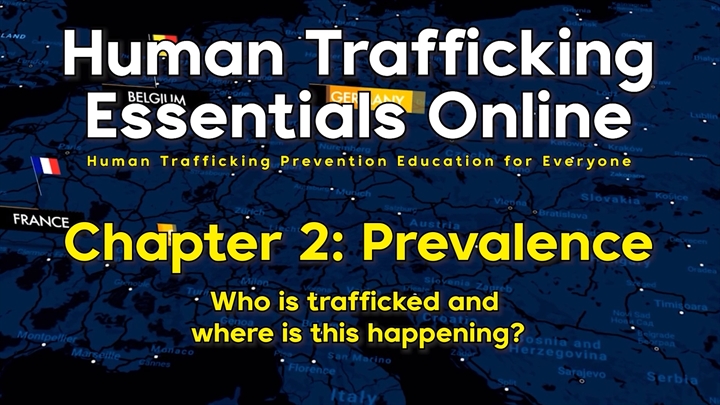 Chapter 2: Prevalence Overview
Chapter 2: Prevalence Overview
Contents
- Statistics of human trafficking in the United States and around the world.
- Different forms of human trafficking.
- Real life accounts of human trafficking in the United States.
- A brief activity to test what you have learned.
Learning Objectives
- The estimated number of people who are human trafficking victims in the United States and worldwide.
- That there are at least 25 different forms of human trafficking.
- Which forms of human trafficking are happening the most.
- The financial scope of the underground (illegal) sex economy in the United States.
Questions you will be able to answer
- How many forms of human trafficking take place in the United States?
- In San Diego, California, the underground sex economy (illegal sex for sale) generates how much money?
- What percentage of identified human trafficking victims in the United States are legally citizens?
- Are the majority of human trafficking victims in the United States legally in the country?
- What is the average age that victims enter sex trafficking in the United States?
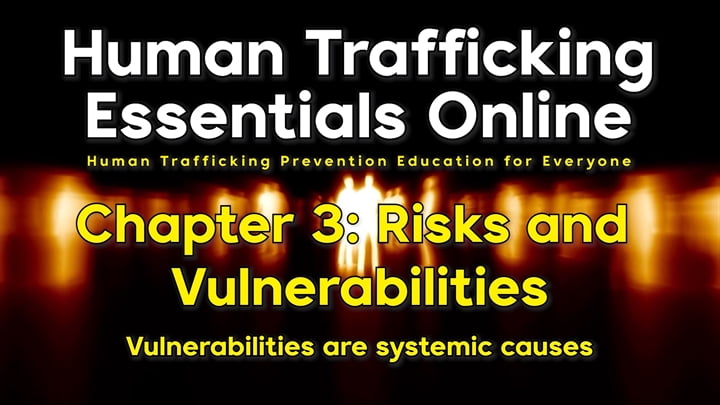 Chapter 3: Risk Factors and Vulnerabilities Overview
Chapter 3: Risk Factors and Vulnerabilities Overview
Contents
- Defining vulnerability to human trafficking.
- List of unmet needs.
- Review of demographics at increased risk of being trafficked.
- Sex trafficking timeline: “From vulnerability to victim.”
- A brief activity to test what you have learned.
Learning Objectives
- Vulnerability definition.
- What makes someone vulnerable.
- What demographic groups are at increased risk of being vulnerable.
- Child sexual abuse is a “gateway” trauma to further abuse, including human trafficking.
Questions you will be able to answer
- How would you define a vulnerability?
- What people are traffickers actively and intentionally looking for?
- What single factor has been found to place individuals at a significantly increased risk for victimization?
- What are unmet needs that make people vulnerable to being trafficked?
- What groups are overly represented as human trafficking victims?
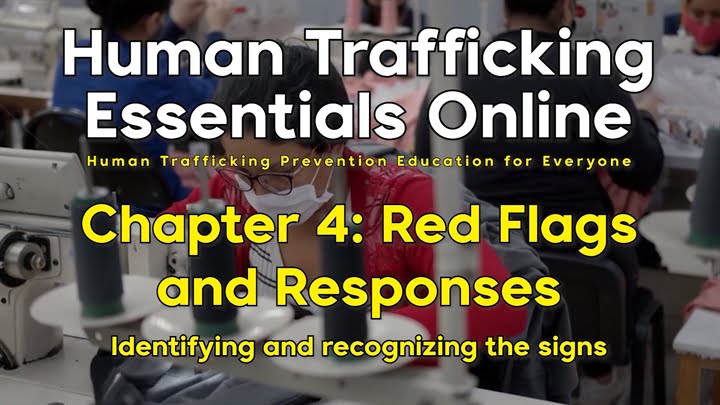 Chapter 4: Red Flags and Responses Overview
Chapter 4: Red Flags and Responses Overview
Contents
- Explanation of grooming and trauma bonding effects on victims.
- Explanation of how to respond to human trafficking in multiple scenarios.
- True stories of how others responded to human trafficking.
- Brief activities to test what you have learned.
Learning Objectives
- Indicators of human trafficking.
- Identify human trafficking in a range of situations by focusing on the context.
- How anyone can identify human trafficking.
- Social media and the internet give traffickers unprecedented access to kids.
- How to respond to a possible incidence of human trafficking.
Questions you will be able to answer
- Human trafficking red flags are indicators of what?
- Where do traffickers go to interact with and groom children into human trafficking?
- When responding to human trafficking, what is most important?
- How do trauma bonds affect a victim’s perception of the trafficker?
- What conditions are present when trauma bonds are established?
Human Trafficking Training Credentials
Training credentials are documents or certifications that demonstrate that an individual has received training in a particular area or field. These credentials can be used to show that the individual has the knowledge, skills, and experience necessary to perform a specific job or task. Training credentials can be obtained through a variety of methods, including attending classes, completing online courses, or passing exams. Some common types of training credentials include certifications, degrees, and licenses. These credentials can be important for individuals who are seeking employment or advancement in their careers, as they can help to show potential employers that they have the necessary skills and qualifications to succeed in a particular field.
